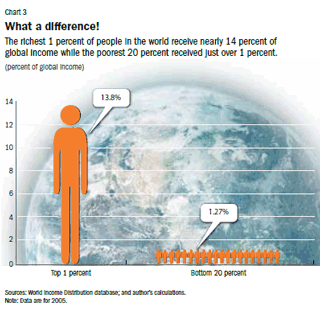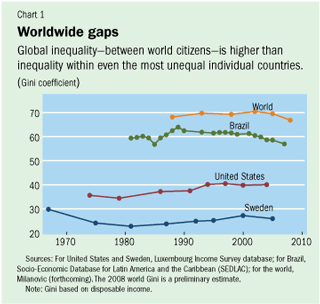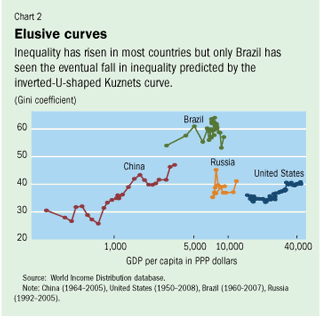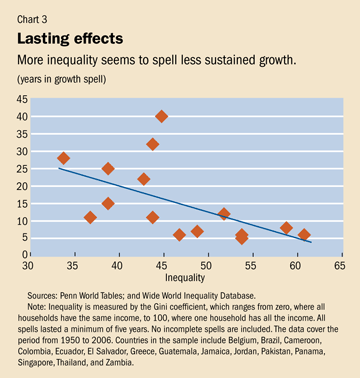Seems like Nepal’s ranking in competitiveness has improved, according to the latest Global Competitiveness Report. Nepal’s ranking has improved by five position, reaching 125 (out of 142 countries) in 2011-12 from 130 in 2010-11 in the Global Competitiveness Index (GCI) 2011-2012. But, Nepal’s ranking is still the lowest in South Asia. Sri Lanka is the most competitive economy in South Asia. In South Asia, ranking of Nepal, Pakistan, Sri Lanka improved while that of India and Bangladesh declined.
The GCI comprises 12 categories – the pillars of competitiveness – which together gives a picture of a country’s competitiveness landscape. The pillars are: institutions, infrastructure, macroeconomic environment, health and primary education, higher education and training, goods market efficiency, labor market efficiency, financial market development, technological readiness, market size, business sophistication and innovation.
| South Asia | GCI 2011-2012 | GCI 2010-2011 | Change |
| Rank | Score | Rank |
| Sri Lanka | 52 | 4.33 | 62 | 10 |
| India | 56 | 4.30 | 51 | -5 |
| Bangladesh | 108 | 3.73 | 107 | -1 |
| Pakistan | 118 | 3.58 | 123 | 5 |
| Nepal | 125 | 3.47 | 130 | 5 |
Switzerland tops the overall rankings. Singapore overtakes Sweden for second position. Northern and Western European countries dominate the top 10 with Sweden (3rd), Finland (4th), Germany (6th), the Netherlands (7th), Denmark (8th) and the United Kingdom (10th). Japan remains the second-ranked Asian economy at 9th place, despite falling three places since last year.The United States continues its decline for the third year in a row, falling one more place to fifth position. In addition to the macroeconomic vulnerabilities that continue to build, some aspects of the United States’ institutional environment continue to raise concern among business leaders, particularly related to low public trust in politicians and concerns about government inefficiency.
| Top five countries | GCI 2011-2012 | GCI 2010-2011 | Change |
| Rank | Score | Rank |
| Switzerland | 1 | 5.74 | 1 | 0 |
| Singapore | 2 | 5.63 | 3 | 1 |
| Sweden | 3 | 5.61 | 2 | -1 |
| Finland | 4 | 5.47 | 7 | 3 |
| United States | 5 | 5.43 | 4 | -1 |
The bottom five countries in the ranking are Chad, Haiti, Burundi, Angola and Yemen.
| Bottom five countries | GCI 2011-2012 | GCI 2010-2011 | Change |
| Rank | Score | Rank |
| Yemen | 138 | 3.06 | n/a | n/a |
| Angola | 139 | 2.96 | 138 | -1 |
| Burundi | 140 | 2.95 | 137 | -3 |
| Haiti | 141 | 2.90 | n/a | n/a |
| Chad | 142 | 2.87 | 139 | -3 |
The report argues that “while competitiveness in advanced economies has stagnated over the past seven years, in many emerging markets it has improved, placing their growth on a more stable footing and mirroring the shift in economic activity from advanced to emerging economies.”
The People’s Republic of China (26th) continues to lead the way among large developing economies, improving by one more place and solidifying its position among the top 30. Among the four other BRICS economies, South Africa (50th) and Brazil (53rd) move upwards while India (56th) and Russia (66th) experience small declines. Several Asian economies perform strongly, with Japan (9th) and Hong Kong SAR (11th) also in the top 20.
-------------------------------------------------------
Nepal’s case:
Though the five position improvement in ranking looks like good news, it actually is regaining the same ranking as in 2009-2010 (though an improvement in overall score by 0.5 points). Also, the inclusion of new countries with lower competitiveness might have pushed down (or improved) Nepal’s ranking. In 2009-10, Nepal’s ranking was 125 out of 133 countries; in 2010-11, the ranking was 130 out of 139 countries; and in 2010-11, the ranking is 125 out of 142 countries. But still, this is an improvement over last year’s ranking.
Nepal is still a factor-driven economy but its macroeconomic environment is better than that of other factor-driven economies. Its labor market efficiency is below the standard of other factor-driven economies (given the series of labor unrest, it is expected). Nepal still has a long way to go to become an efficiency-driven and then innovation-driven economy.
In basic requirements (institutions, infrastructure, macroeconomic environment, and health and primary education), Nepal’s ranking is 121 out of 142 economies. In efficiency enhancers (higher education and training, goods market efficiency, labor market efficiency, financial market development, technological readiness, and market size), Nepal’s ranking is 127. In innovation and sophistication factors (business sophistication and innovation), Nepal’s ranking is 132.

Nepal’s macroeconomic environment is ranked as 50 most competitive out of 142 economies. Similarly, its market size is ranked 98 out of 142 countries. Innovation in Nepal is ranked 134 out of 142 economies. Nepal’s infrastructure ranking is the second worst, 141 out of 142 economies. Research has also shown infrastructure as the most binding constraint to growth in the Nepali economy.
The other rankings are: institutions (124), infrastructure (141), macroeconomic environment (50), health and primary education (115); higher education and training (129), goods market efficiency (125), labor market efficiency (128), financial market development (100), technological readiness (130), market size (98); business sophistication (125) and innovation (134).
In the survey of business sector, government instability is identified as the most problematic factor of doing business in Nepal. It is followed inefficient government bureaucracy, policy instability, corruption, inadequate supply of infrastructure, and restrictive labor regulation, among others.





 Milanovic argues that Kuznets was right during the early days of the US (up until 1970s)and the UK (up until 1920s). But, inequality is rising now when average mean income is also rising. Similarly, inequality in poor countries is also rising, which is counter to HOS theorem.
Milanovic argues that Kuznets was right during the early days of the US (up until 1970s)and the UK (up until 1920s). But, inequality is rising now when average mean income is also rising. Similarly, inequality in poor countries is also rising, which is counter to HOS theorem. 





